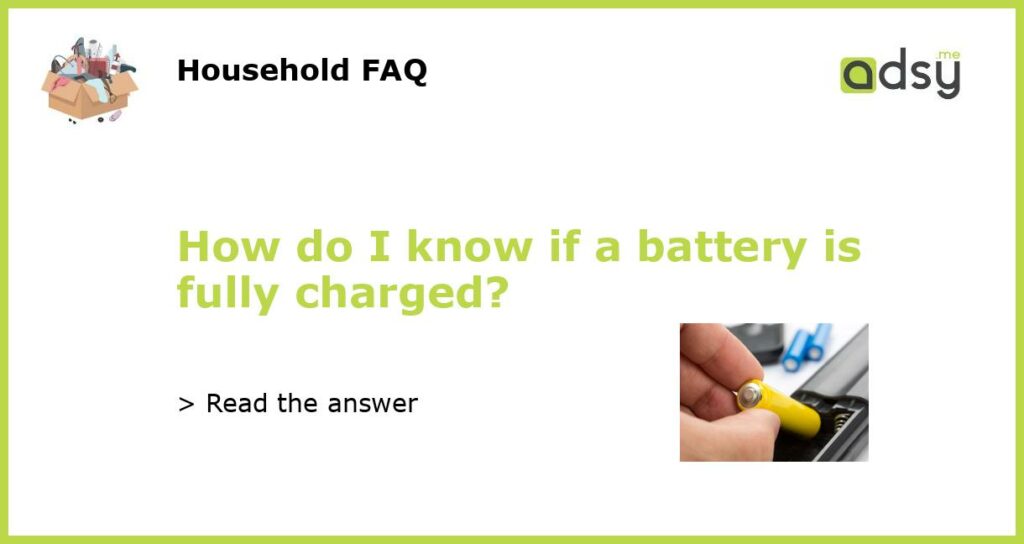Why It’s Important to Know if a Battery is Fully Charged
Knowing if a battery is fully charged is important for several reasons. First and foremost, it ensures that you have enough power to use your device or equipment without interruption. Whether it’s your smartphone, laptop, or car battery, knowing the charge level can help you plan your usage and prevent unexpected shutdowns. Additionally, understanding the charging status of a battery is crucial for its overall health and lifespan. Overcharging a battery can lead to permanent damage, while undercharging can result in reduced capacity. By monitoring the charge level, you can maximize the performance and longevity of your batteries.
Method 1: Observing the Charging Indicator
Many devices and battery chargers have built-in indicators to show the charging status. Common indicators include LED lights or icons on the device or charger itself. Refer to the user manual or product specifications for information on interpreting these indicators. Generally, a solid light or full battery icon indicates a fully charged battery, while a blinking light or empty battery icon suggests that the battery is still charging.
Method 2: Using a Battery Tester or Voltage Meter
If your battery does not have a built-in charging indicator, you can use a battery tester or voltage meter to check its charge level. Battery testers are simple devices that provide a digital or analog reading of a battery’s voltage. Connect the tester’s positive and negative probes to the corresponding battery terminals and read the voltage displayed. A fully charged battery typically has a voltage reading close to its rated voltage. Refer to the battery’s specifications or consult the manufacturer’s guidelines for the expected voltage range.
Method 3: Monitoring the Charging Time
Another way to determine if a battery is fully charged is by monitoring the charging time. Most batteries have a recommended charging time provided by the manufacturer. This time can vary depending on the battery type and capacity. When charging a battery, start a timer and monitor the charging progress. Once the recommended charging time has elapsed, the battery should be fully charged. However, keep in mind that some chargers have a trickle charge feature, which means they continue charging the battery at a slow rate even after it reaches full charge. In such cases, it may be necessary to disconnect the charger after the recommended charging time to avoid overcharging.
Method 4: Using a Battery Management System or Charger
For more advanced battery systems, such as those used in electric vehicles or renewable energy storage, a battery management system (BMS) or charger is often employed. These systems use sophisticated algorithms and monitoring capabilities to determine the state of charge of the battery accurately. They may provide real-time data on the battery’s charge level, voltage, and other parameters, allowing you to know precisely when the battery is fully charged. Consult the user manual or manufacturer’s guidelines for instructions on accessing and interpreting this information.
Method 5: Using a Smartphone App or Software
Some batteries, especially those used in smartphones and tablets, can be monitored using dedicated apps or software. These applications provide real-time information on the battery’s charge level, estimated remaining time, and other relevant parameters. By installing the app or software provided by the device manufacturer or a trusted third-party developer, you can easily track the charging status of your battery. Check your device’s app store or the manufacturer’s website for the recommended app or software.






